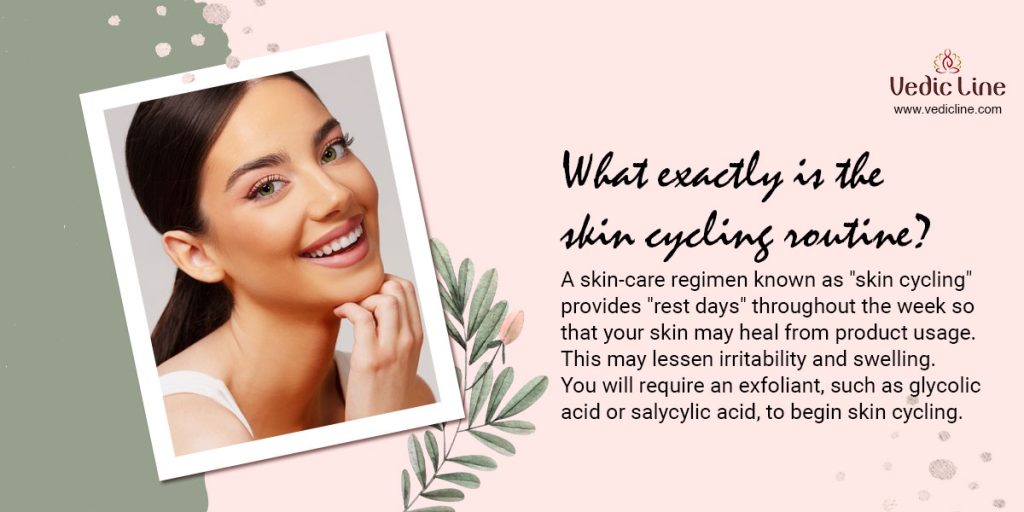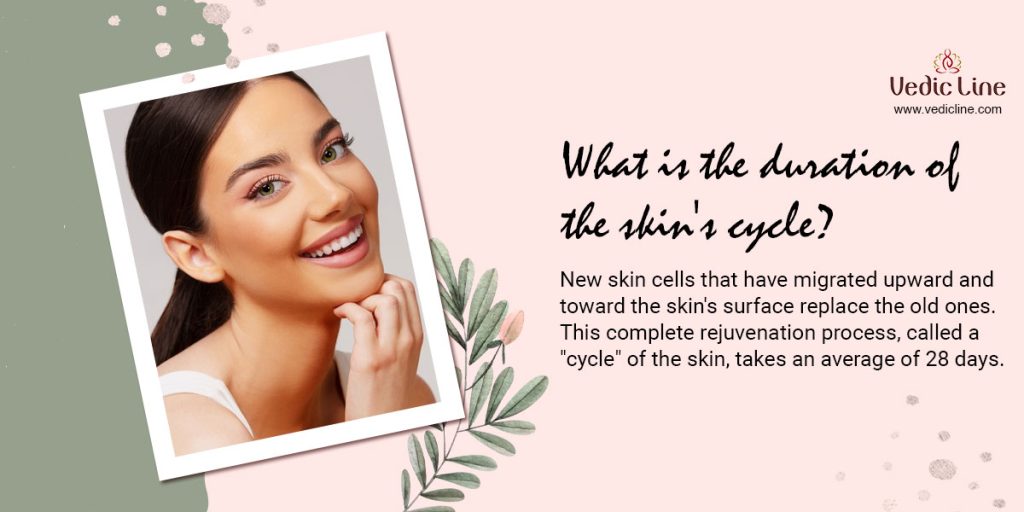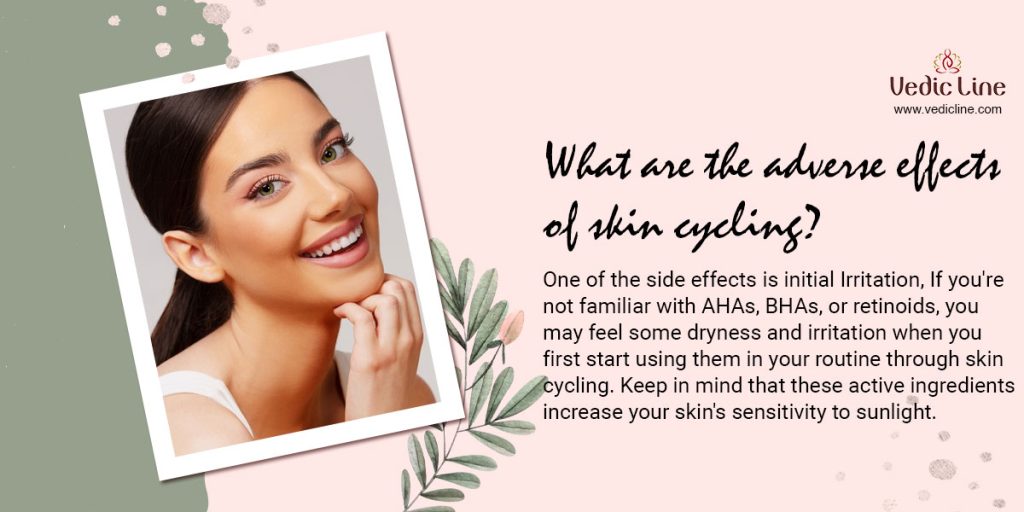The beauty world is no stranger to trends,but there are a few practices that are effective and durable. A trend that has gained significant traction is skin cycling, and it deserves consideration. While fads disappear quickly, a skin cycling routine is a scientifically based method that provides a balanced skincare approach that resonates with enthusiasts alike. We’ll take a look at why skin cycling is sweeping the beauty world and how it could be the secret to obtaining the healthy glow that you’ve been seeking.
What is Skin Cycling?
Skin cycling is a skincare strategy that involves rotating different active ingredients in your routine on specific days to maximize their benefits while minimizing irritation. The idea is simple: by cycling through products that serve different functions—like exfoliation, retinoid application, and hydration—you can give your skin the time it needs to recover and adapt, thereby enhancing overall skin health.
The basic skin cycling routine typically spans four nights:
Night 1: Exfoliation – This night is dedicated to removing dead skin cells and unclogging pores. Products like chemical exfoliants (AHAs, BHAs) are used to promote cell turnover.
Night 2: Retinoid Application – The second night involves the application of retinoids, which are powerful agents in reducing signs of aging, improving texture, and addressing hyperpigmentation.
Night 3 and 4: Recovery – These nights are all about hydration and barrier repair. Gentle, nourishing products like moisturizers rich in ceramides, peptides, and hyaluronic acid are used to soothe the skin.
This cycle then repeats, allowing the skin to benefit from potent ingredients without the risk of overuse, which can lead to irritation, dryness, and other issues.

The Science Behind Skin Cycling
The skin’s barrier is a complex structure that protects against external aggressors while retaining moisture. When this barrier is compromise—often due to the overuse of active ingredients—problems like redness, flaking, and sensitivity can arise. Skin cycling works by balancing the use of these actives with recovery periods, ensuring that the skin’s barrier remains intact.
Exfoliation on the first night primes the skin by removing dead cells, allowing for better absorption of active ingredients like retinoids on the second night. Retinoids are known for their potent anti-aging benefits but can be harsh if used too frequently. By giving the skin a break on the third and fourth nights, you allow it to repair and strengthen, reducing the likelihood of irritation.
This method is particularly beneficial for those with sensitive skin or beginners who are new to using powerful actives. The structured approach of skin cycling helps mitigate the “retinoid uglies” (the initial phase where the skin might peel or break out due to retinoid use), making it easier to integrate these ingredients into a routine.
Why is Skin Cycling So Popular?
Balanced Approach: One of the primary reasons skin cycling is gaining popularity is because it offers a balanced approach to skincare. Many people fall into the trap of overusing products, leading to compromised skin barriers and chronic irritation. Skin cycling prevents this by building in rest days, which are just as important as active treatment days.
Customization: Skin cycling is highly customizable. Whether you’re dealing with acne, hyperpigmentation, or signs of aging, you can tailor the cycle to address your specific concerns. For instance, those with acne-prone skin might include a night with a salicylic acid treatment, while someone focused on anti-aging might prioritize nights with retinoids.

Simplicity and Structure: The beauty industry can often feel overwhelming with the sheer number of products and steps involved. Skin cycling simplifies this by offering a clear, structured routine. It eliminates the guesswork of when to use certain products, providing a roadmap that’s easy to follow.
Results-Driven: At its core, skin cycling is about delivering results. By ensuring that your skin isn’t overloaded with actives, you’re more likely to see positive changes—smoother texture, reduced breakouts, and a more radiant complexion—without the setbacks that can come from overzealous product use.
Endorsement by Experts: Dermatologists and skin care experts often recommend skin cycling because it aligns with the skin’s natural renewal processes. The method encourages a more mindful approach to skincare, focusing on the quality of products and their application rather than sheer quantity.
How to Start Skin Cycling
Starting a skin cycling routine is straightforward. Here’s a basic guide:
Identify Your Actives: Choose your exfoliant (like glycolic acid or salicylic acid) and retinoid (like retinol or tretinoin). Ensure that you also have a gentle, hydrating moisturizer for recovery nights.
Create A Plan Your Cycle: Commence with the four-night cycle that was mention earlier. As your skin adapts, you can adjust the cycle according to your needs, perhaps extending recovery periods or alternating activities.
Take note of your skin:Keep an eye on how your skin reacts. If you notice excessive dryness or irritation, consider adding more recovery days.The objective is to achieve equilibrium and not to rush results.
Be persistent: Like any skincare routine, consistency is crucial. Be patient, it may take several cycles before you notice noticeable improvements.
Adjust as Needed: As your skin’s needs change, so should your cycle. For example, during colder months, you might need more hydration-focused recovery nights, while in summer, you might emphasize exfoliation to combat excess oil production.

Last Thoughts
Skin cycling routine is more than just a passing trend; it’s a thoughtful approach to skincare that prioritizes balance, customization, and results. By giving your skin what it needs when it needs it, skin cycling helps maintain a healthy, glowing complexion without the pitfalls of overuse. Whether you’re a skincare novice or a seasoned enthusiast, this method offers a structured, science-backed way to optimize your routine.



